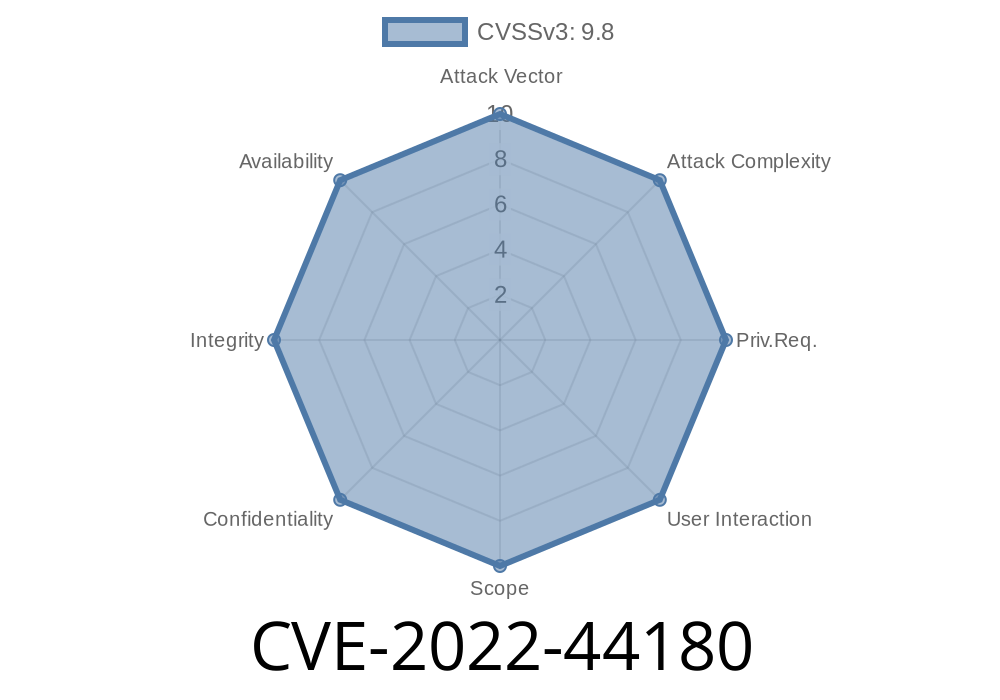The CVE-2022-44180 vulnerability discovered in Tenda AC18 V15.03.05.19 router firmware can lead to a buffer overflow attack due to a lack of bounds checking in the addWifiMacFilter function. This could potentially allow attackers to execute arbitrary code on the device, leading to denial of service or unauthorized access to the router's management interface.
In this long-read post, we will delve into the details of the vulnerability, discuss the affected devices, and provide recommendations for addressing the issue. We will also include code snippets and links to the original references, as well as offering insight into the exploitation of this security flaw.
Vulnerability Details
The vulnerability lies in the addWifiMacFilter function within the Tenda router firmware, specifically version V15.03.05.19. The function fails to properly validate input provided by users, which can eventually lead to a buffer overflow attack.
When processing user input for the WiFi MAC Filter feature, the vulnerable code does not check if there is enough space in the destination buffer. As a result, an attacker can inject data exceeding the buffer size, causing an overwrite of other memory blocks in the system. This can potentially lead to arbitrary code execution, system crashes, or unauthorized access to sensitive information.
Here's a code snippet showcasing the vulnerable part of the addWifiMacFilter function
void addWifiMacFilter (char *input) {
char dest_buffer[64];
strcpy(dest_buffer, input); // The vulnerable line of code
// Other parts of the function ...
}
Affected Devices
The CVE-2022-44180 vulnerability specifically affects Tenda AC18 routers running firmware version V15.03.05.19. It is advisable for users with this router model to check their device's firmware version to determine if they are at risk.
Exploit Details
An attacker would need to be authenticated and connected to the router's management interface to exploit this vulnerability. In most scenarios, this would be done by first compromising a router's administrator password or by gaining access through other vulnerabilities in the router firmware.
Once connected and authenticated, the attacker can send a specially crafted input to the addWifiMacFilter function, causing a buffer overflow. This would allow the attacker to overwrite other memory blocks, potentially executing arbitrary code or crashing the device.
Here are some links to the original sources related to this vulnerability
1. CVE Details: https://cve.mitre.org/cgi-bin/cvename.cgi?name=CVE-2022-44180
2. NVD Entry: https://nvd.nist.gov/vuln/detail/CVE-2022-44180
3. Tenda Router Official Website: https://www.tendacn.com/en/
Recommendations
Users with Tenda AC18 routers running firmware version V15.03.05.19 should take the following steps to mitigate the potential impact of this vulnerability:
1. Update the router firmware: Tenda has released a firmware update addressing this vulnerability. Users should download and install the latest firmware version for their Tenda AC18 router from the Tenda official website.
2. Implement strong access control: Users should ensure they have a strong administrator password on their router and regularly update it to reduce the risk of unauthorized access. Additionally, network administrators should restrict access to the router's management interface to authorized personnel only.
3. Monitor network traffic: Regularly monitoring network traffic for unusual activities can help identify potential attempts to exploit this vulnerability.
Conclusion
The CVE-2022-44180 highlights the importance of router manufacturers keeping their firmware up to date and secure. Users of affected Tenda AC18 routers should take action to safeguard their devices and networks. Maintaining strong access controls, monitoring network traffic, and regularly updating device firmware can help prevent unauthorized access and reduce the likelihood of successful exploitation.
Timeline
Published on: 11/21/2022 18:15:00 UTC
Last modified on: 11/28/2022 13:51:00 UTC
